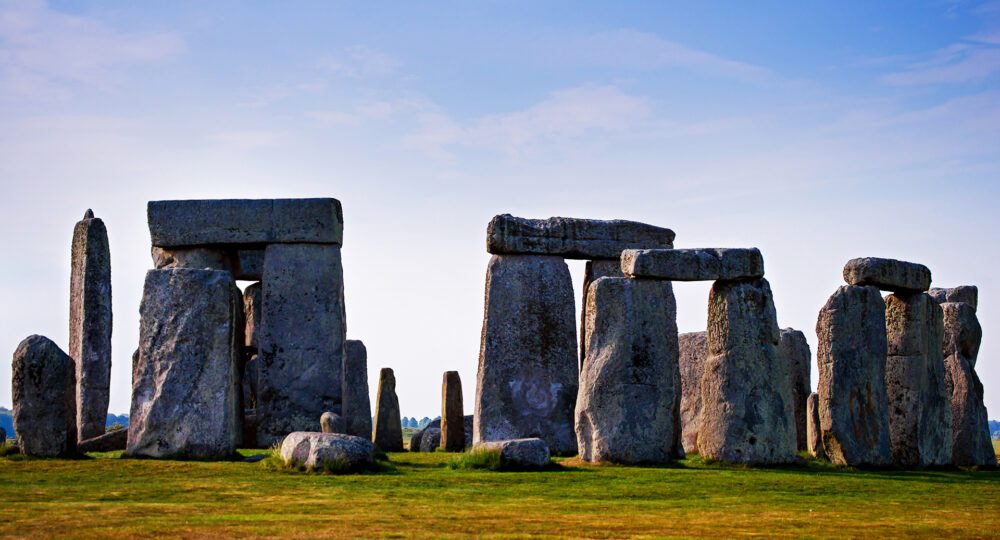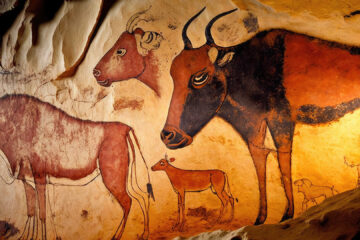
Deciphering Stonehenge: Ancient Wonder, Prehistoric Connections & Modern Perspectives
Stonehenge, a prehistoric monument in the English countryside, continues to captivate scholars and laypersons alike. It is an iconic symbol of the ancient past and a testament to the Neolithic and Bronze Age cultures. Constructed over several phases, the earliest dating back to about 3000 BCE, Stonehenge’s formation is a feat of prehistoric engineering. The massive sarsen stones, some weighing as much as 25 tons, were transported from over 20 miles away. This Herculean task, achieved without modern machinery, hints at a sophisticated understanding of transportation and construction techniques among the ancient builders.
Pillars of Neolithic and Bronze Age Culture
Cultural and ritualistic importance in the Neolithic period: Stonehenge emerged as more than a mere monument in the Neolithic era. It likely served as a ceremonial or spiritual hub, reflecting the era’s deep-seated religious and cultural practices. The alignment of its stones with solstices points to its use as an astronomical observatory, indicating these ancient people’s sophisticated understanding of celestial patterns.
Transition and transformation in the Bronze Age: Stonehenge continued to evolve as the Bronze Age dawned. This period saw the introduction of smaller bluestones, which were rearranged to form new structures within the site. The emergence of bronze tools likely facilitated these modifications, marking a significant technological shift reflected in the monument’s evolving architecture.
Recent archaeological discoveries suggest Stonehenge was a burial ground during the Bronze Age. This dual role as both a spiritual and funerary site highlights its central place in the cultural and religious life of the period. The numerous burial mounds surrounding Stonehenge further attest to its significance as a sacred landscape.
Theories of Purpose: From the Celestial to the Ceremonial
The purpose of Stonehenge has been a topic of debate for centuries. One prevalent theory suggests that it was an astronomical observatory. Alignments of the stones with the solstices indicate a deep understanding of celestial events. Another theory posits that Stonehenge was a sacred burial ground. Archaeological evidence, including human remains in the vicinity, supports this notion, suggesting a place of reverence for the ancestors.
Beyond the celestial and the ceremonial, some scholars propose that Stonehenge served as a site for social gatherings or ritualistic ceremonies. This theory is bolstered by the discovery of pottery, animal bones, and other artefacts, implying usage beyond the mere observation of astronomical phenomena.
Modern Insights and Continuing Mysteries
Despite advancements in archaeology and technology, Stonehenge continues to guard its secrets. Modern techniques like ground-penetrating radar and carbon dating have provided insights into the construction timeline and usage of the site. Yet, the full story of Stonehenge still needs to be discovered.
Stonehenge, a lingering mystery shrouded in the mists of time, remains a powerful symbol of Neolithic and Bronze Age cultures. Its construction and continued use reflect these ancient societies’ evolving beliefs, technological advancements, and social structures. As a cultural and architectural marvel, Stonehenge offers a unique window into the distant past, allowing us to glimpse the complexities and capabilities of early human civilizations. Staying stoically through millennia, Stonehenge embodies a deep-rooted mystery of human history while, partially illuminated by theories and scientific inquiry, continuing to intrigue and mystify. This ancient monument, a testament to prehistoric ingenuity, remains a focal point of historical and archaeological exploration, inviting endless contemplation and study.









